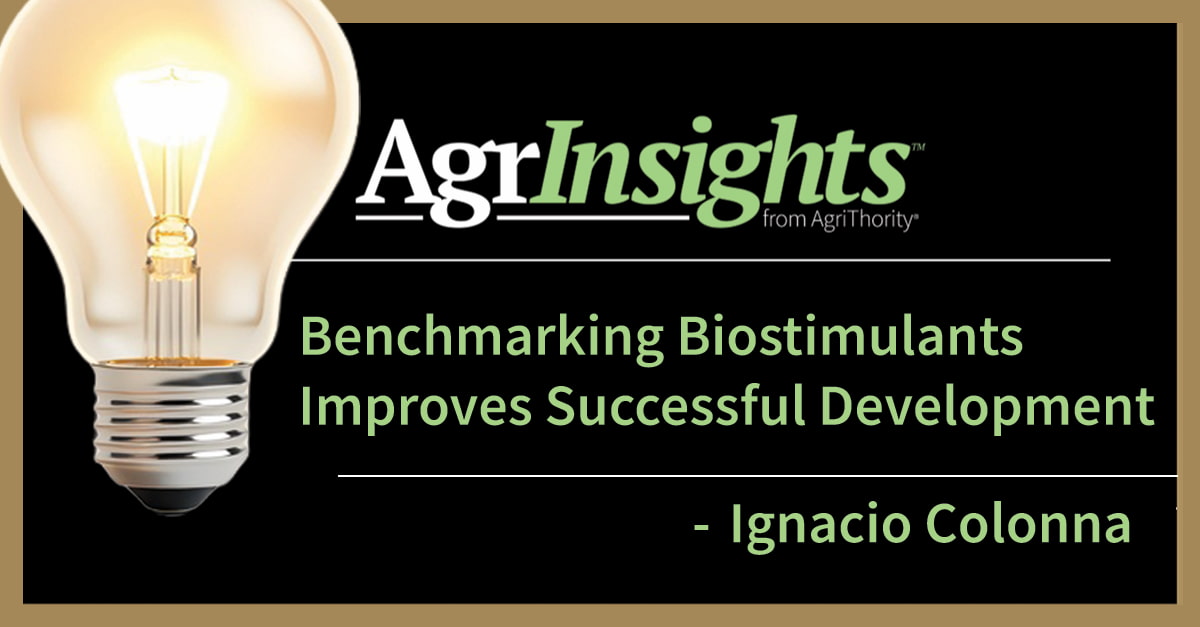In 2023, AgriThority® provided product development support to small and large companies to test their 67 new innovative technologies (3 biofungicides, 2 bioinsecticides, 1 bionematicide, 27 biostimulants, 6 chemical fertilizers, 8 novel technologies, 10 bioherbicides, 4 chemical herbicides, 5 biomitigants, and genetically modified camelina with herbicide tolerant genes) on 21 crops in 10 countries (Argentina, Brazil, Canada, Chile, France, Italy, Poland, Spain, Mexico, and USA). In North America, a total of 223 greenhouse and field studies comprising 10660 small and large plots spread across 29 states of the USA, one of Canada, and six of Mexico (Figure 1) showed promising results for new ag innovations and noteworthy findings.
1. Biofungicides
A biofungicide based on microbes applied as a foliar application provided statistically comparable control of Black Sigatoka disease of bananas, powdery mildew disease of tomatoes, and Rhizoctonia stem canker and black scurf of potatoes to a commercially available biofungicide. The integration of the test biofungicide into conventional synthetic fungicide spray programs will not only manage these diseases with increased yield but will also reduce the probability of the development of resistance, increase the life of synthetic chemistries and reduce the fungicide residue. Two biofungicides based on microbes applied in furrow at planting improved the vigor and yield of corn and soybean plants.
2. Bioinsecticides
Two bioinsecticides applied as a foliar application at the economic threshold level reduced the population of aphids, tarnished plant bugs, and thrips on cotton and sugarcane aphids on sorghum comparable to the synthetic insecticides.
3. Bionematicide
A microbe-based bionematicide applied in furrow at planting reduced the population of parasitic nematodes on corn and soybeans comparable to a commercially available bionematicide.
4. Bio- and chemical herbicides
Biobased herbicides improved the control of broadleaf weeds when used with synthetic herbicides. A new formulation of 2,4-D, Dicamba, and 2,4D + Glyphosate applied as a burndown, and S-Metolachlor as pre-emergent at half rate provided comparable control of the broadleaves and grasses to the full rate of equivalent herbicides currently used by the growers in the Midwest.
5. Microbial inoculants
A new formulation of a microbial inoculant based on the lyophilized bacterial cells of Bradyrhizobium japonicum strain NC92 applied in furrow at planting of peanut and Bradyrhizobium japonicum strain CB1809 applied in furrow at planting and as a seed treatment of soybeans improved plant growth, nodulation, and yield of these crops comparable to the commercial Bradyrhizobium inoculants currently used by the growers in the states of Alabama, Georgia, Iowa, North Carolina and Texas.
6. Biostimulants
Eight biostimulants with a consortium of microbes applied in furrow at planting or as a seed treatment enhanced the early establishment, growth, and yield of corn and soybeans compared to the commercial standard through improved nutrient uptake and tolerance to abiotic stress.
7. Biofertilizer
A mycorrhizae-based biofertilizer consisting of silicon, Humic acid, and mycorrhizae applied as pre-plant broadcast before planting and in furrow at planting improved the performance of TSP with enhanced growth and yield in corn and soybeans. MAP coated with the microbial consortium stimulates the microbial activity in the soil for increased micro-nutrient uptake applied as pre-plant broadcast incorporated into the soil application and a liquid ammonium polyphosphate 10-34-0 applied 2×2 at planting provided a higher corn grain and soybean yield compared to the standard MAP and TSP. Granular and WSP formulations of Humi[K], Humi[K] Bio, and raw leonardite broadcast incorporated into the soil before planting, and a foliar application of an organic acid-based fertilizer later improved the growth and yield of alfalfa, corn, cotton, potatoes, and soybeans in the 22 studies on these crops.
8. Synthetic fertilizer
MAP coated with the microbial consortium that stimulates the microbial activity in the soil for increased micro-nutrient uptake applied as pre-plant broadcast incorporated into the soil application and a liquid ammonium polyphosphate 10-34-0 applied 2×2 at planting provided a higher corn grain and soybean yield compared to the standard MAP and TSP. Two new phosphorus fertilizers with better efficient phosphorus delivery systems (chemically binding nutrients aluminum oxide and with controlled release) resulted in a 25 to 50% reduction of phosphorus requirement compared to the GSP while retaining yield in canola, corn, cotton, and soybeans by maximizing nutrient uptake and storing the excess nutrients as a natural buffer and releasing them only when needed.
9. Biochar extract
Biochar extract is a bio seed treatment product developed from softwood biochar produced using a highly specific pyrolysis process. It enhanced the growth and yield of canola when applied as a slurry seed treatment before planting. Three other products from biochar applied in furrow at planting enhanced corn growth and yield.
10. Hydrosimulation
Hydrosimulation treatment of corn seeds improved the plant emergence and early growth of corn plants by forming a layer of hydrogel around the seed, which helped the seed to absorb more water.
11. Nanotechnologies
Four nano products based on nanotechnologies applied in furrow at planting in combination with TSP pre-plant broadcast incorporated into the soil improved the uptake of phosphorus, zinc and other minerals in inorganic form and overall growth and productivity of canola, corn, cotton and soybeans compared to the solo TSP.
12. Genetically modified camelina
Successfully evaluated winter and spring entries of camelina with and without herbicide resistance genes in Midwest and southeastern parts of the USA. Results showed genetically modified camelina with herbicide tolerance genes can be grown effectively in Midwest and southeastern USA, and it can be an alternative to wheat and other winter crops, particularly in the areas that have limited irrigation or less rain.
When your Research is ready for Development, turn to AgriThority® for scientific product, business and market expertise. As an independent global science resource, we focus on exploring potential, expanding market access, and evolving production for greater food security and sustainability.



